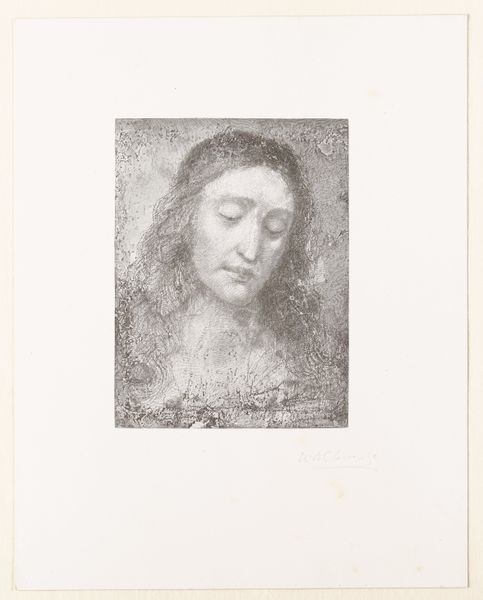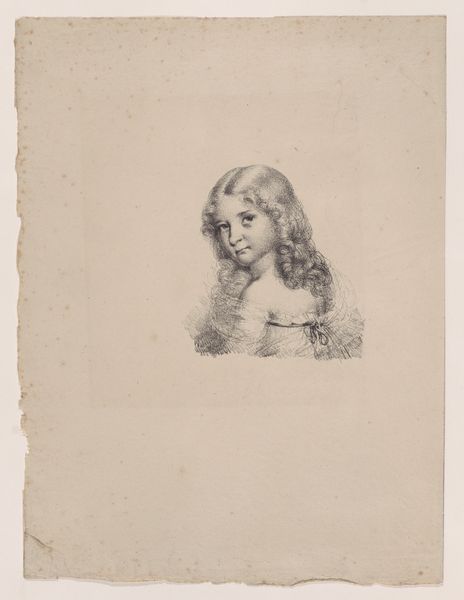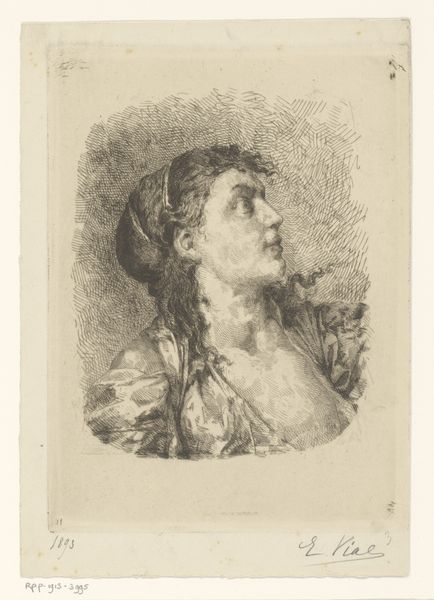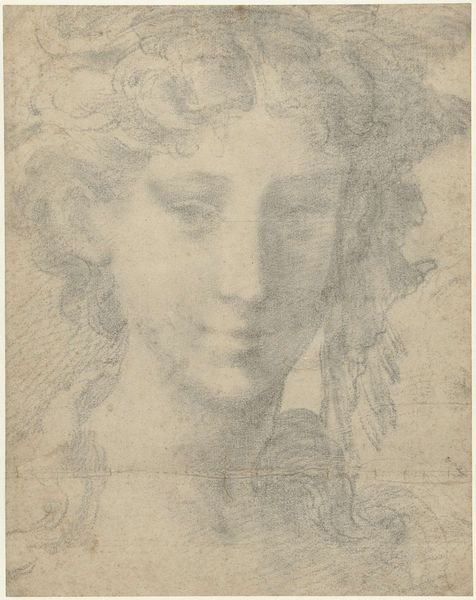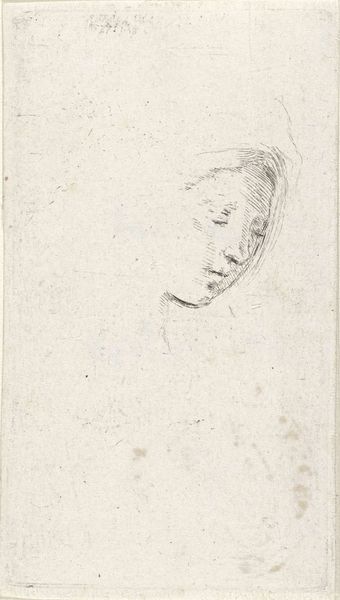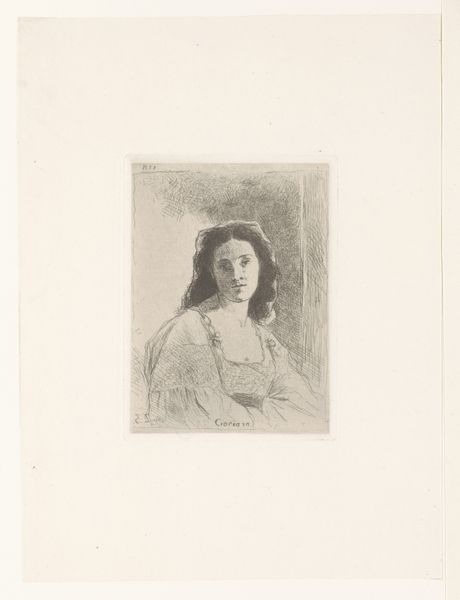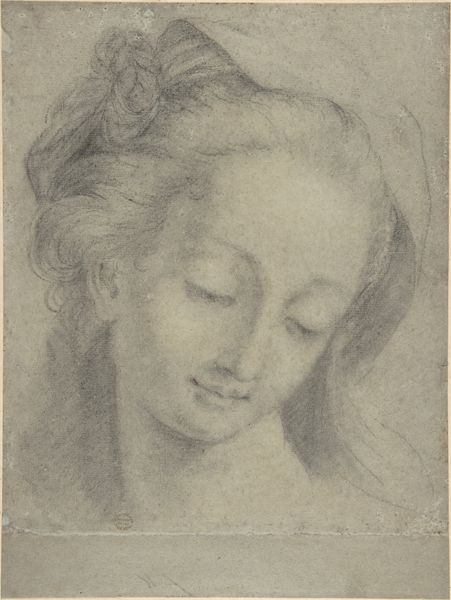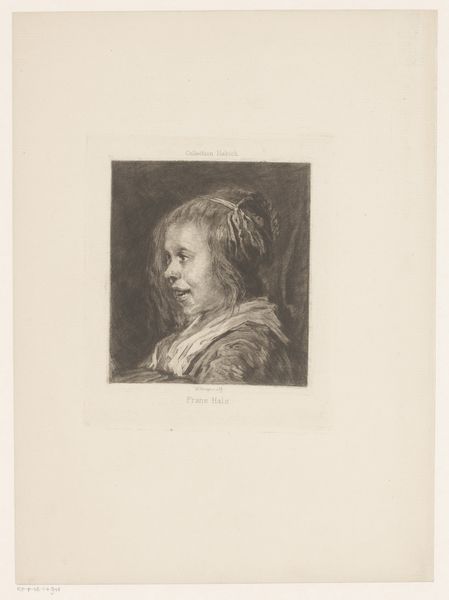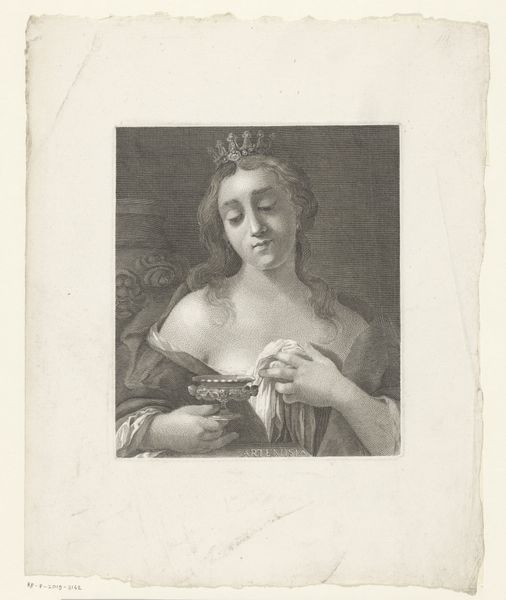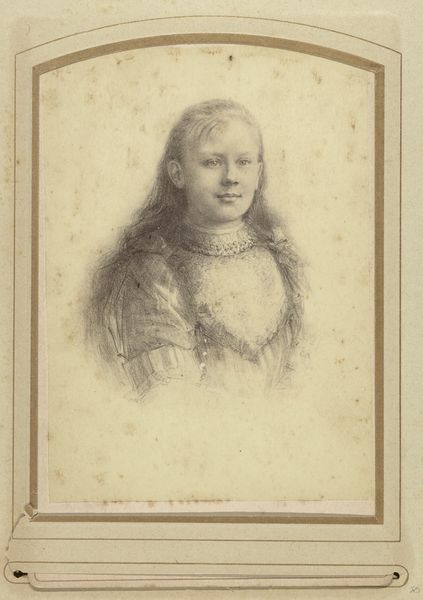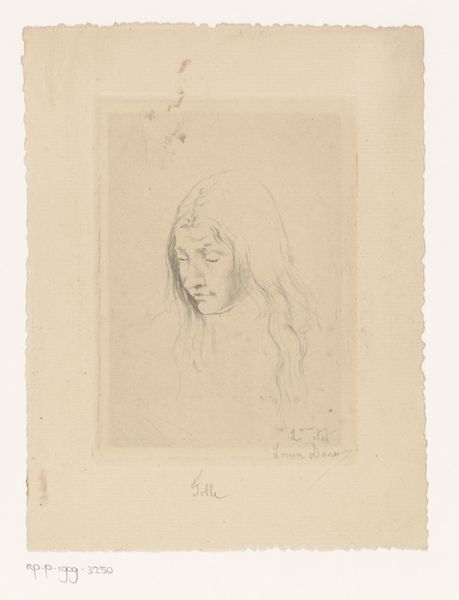
Fotoreproductie van de tekening Hoofd van Jezus (voorstudie voor het fresco Het laatste Avondmaal) door Leonardo da Vinci 1851 - 1880
0:00
0:00
drawing
#
portrait
#
drawing
#
11_renaissance
#
italian-renaissance
Dimensions: height 261 mm, width 201 mm, height 478 mm, width 317 mm
Copyright: Rijks Museum: Open Domain
Curator: This compelling photogravure captures Pompeo Pozzi's rendition of Leonardo da Vinci's preparatory drawing, "Head of Christ," a study for his famous "Last Supper" fresco. Dating roughly between 1851 and 1880, it presents a window into the making of a masterpiece. Editor: Immediately, I'm struck by the sense of contemplation it evokes. The eyes are closed, suggesting inner reflection. Even reproduced, the tenderness and humanity captured are palpable. Curator: The averted gaze is pivotal, isn't it? Consider that Leonardo chose not to represent Christ interacting directly with the others. The closed eyes amplify an introspective narrative thread, quite in line with psychological dimensions explored in Renaissance art where depictions served deeper narrative and symbolic roles. Editor: Absolutely. It encourages a focus on inner turmoil and foreknowledge of his impending fate. Do you think its public appeal lies partly in this accessible vulnerability? I mean, here is the divine presented in this preparatory form with its inherent imperfections, yet these “flaws” may underscore his mortality and foster broader relatability. Curator: Good point! While art of this period can evoke spirituality and grace, what it shares is also that access point. Its intimate format allows us a peek "behind the scenes," witnessing an artist work out the expression of divinity in ways not seen so intimately outside of a drawing like this. We're invited to experience Christ’s humanity alongside his symbolic importance. It humanizes a religious icon through the artistic process itself. Editor: Yes, and by focusing on a close-up of the head, it zeroes in on emotion, sidelining the narrative context of "The Last Supper" for a more internal experience. It creates a universal scene, beyond religion. It begs the questions about humanity's role in history. Curator: I appreciate your perspective so much. Thinking about it in those terms makes it resonate on a different level. Editor: And thank you for tracing this historical interpretation of its cultural meaning!
Comments
No comments
Be the first to comment and join the conversation on the ultimate creative platform.
